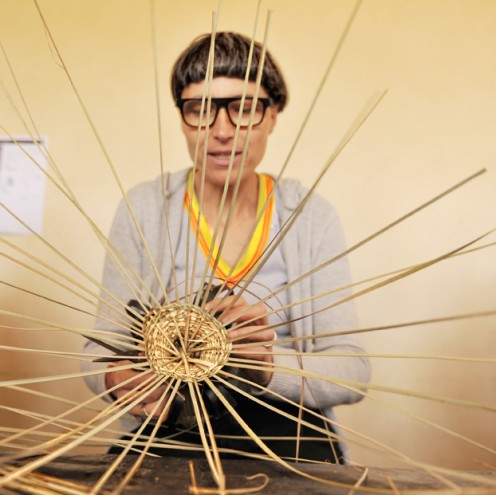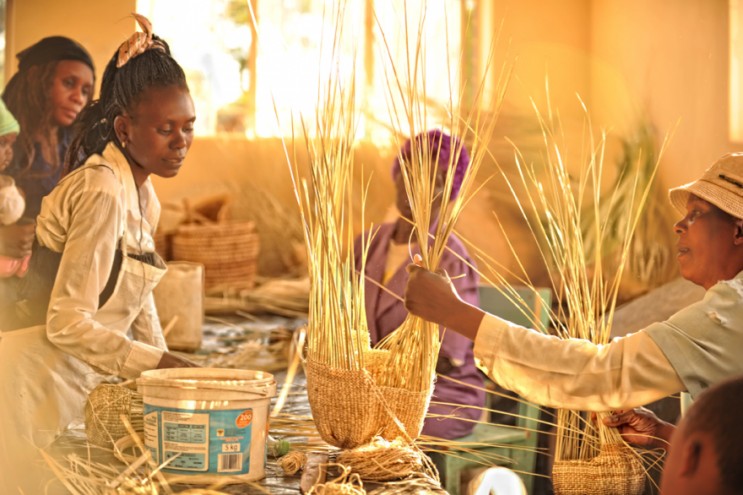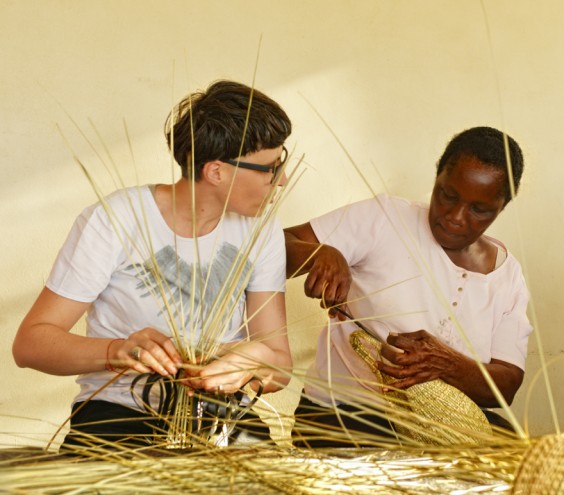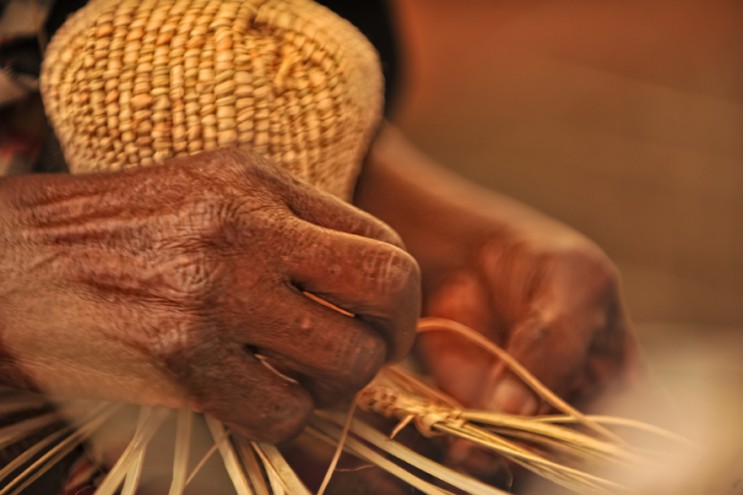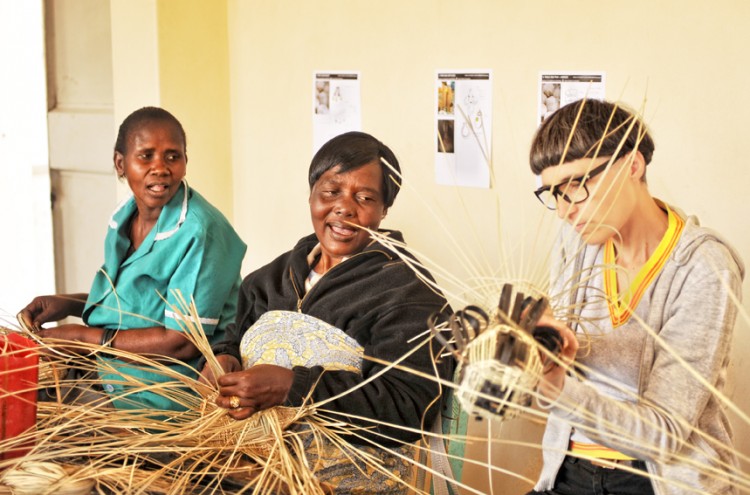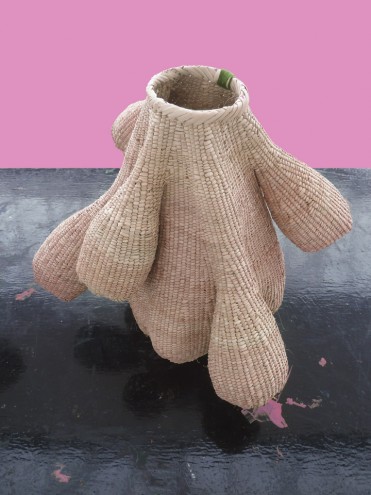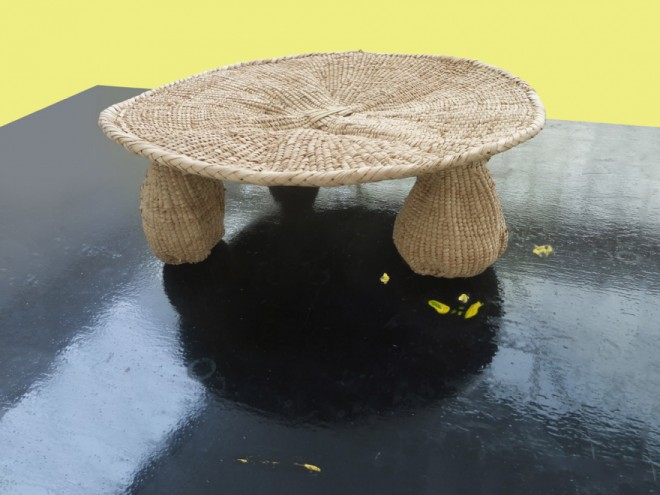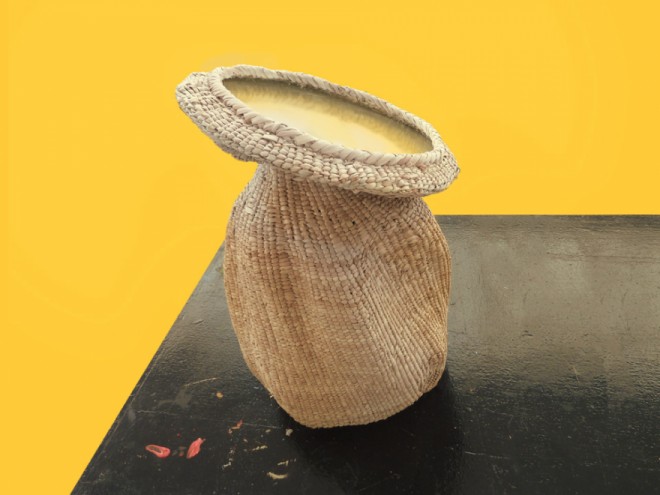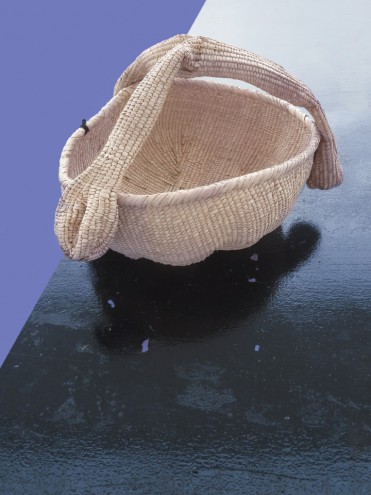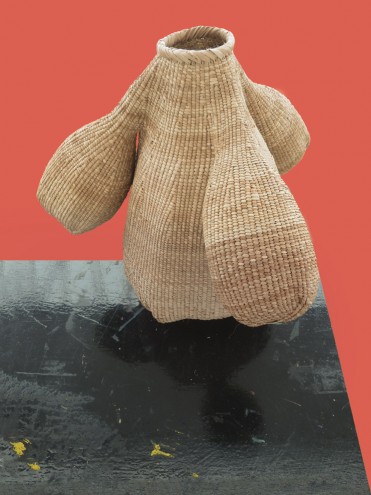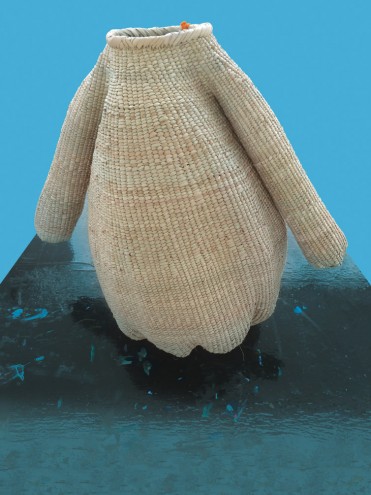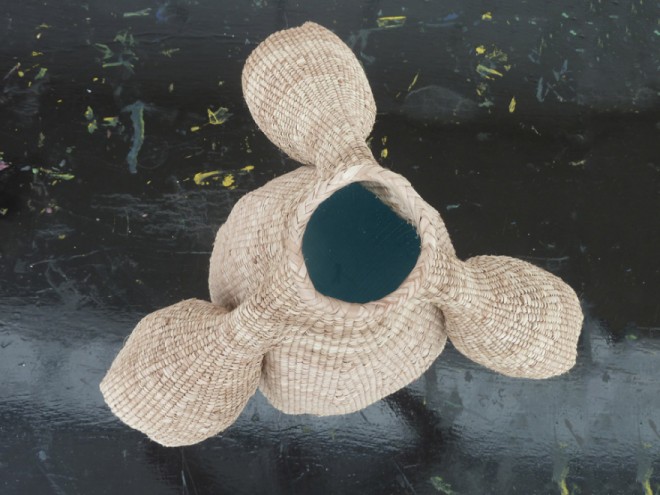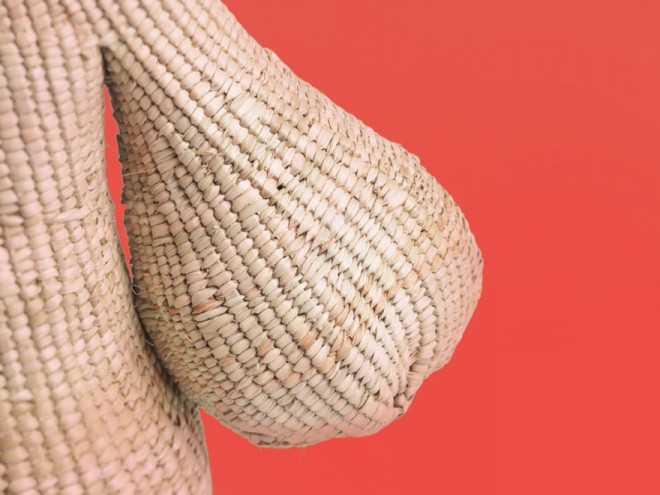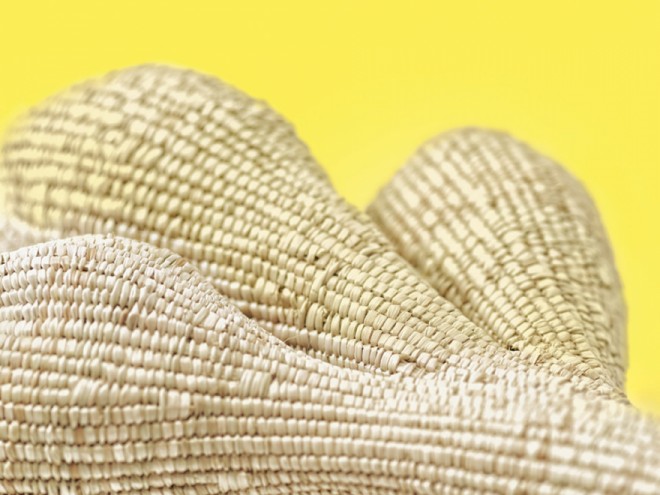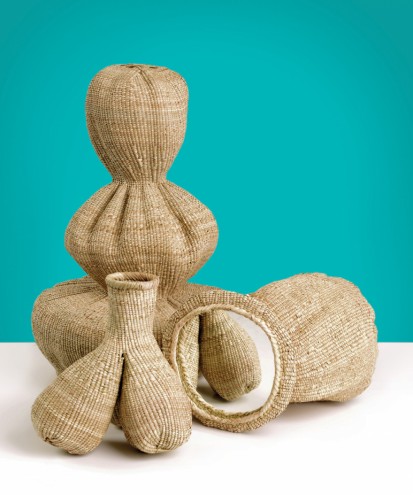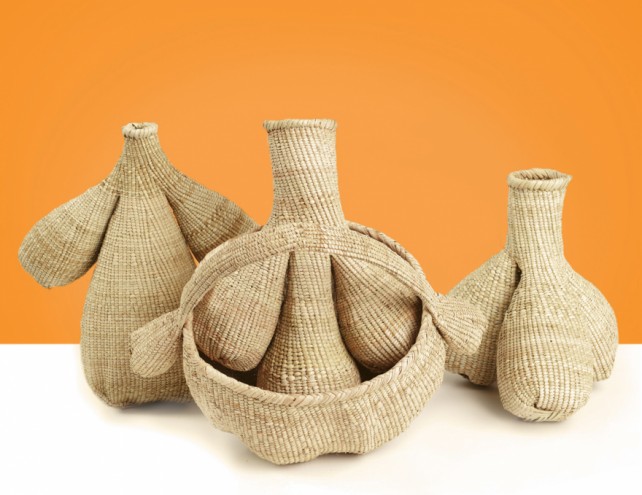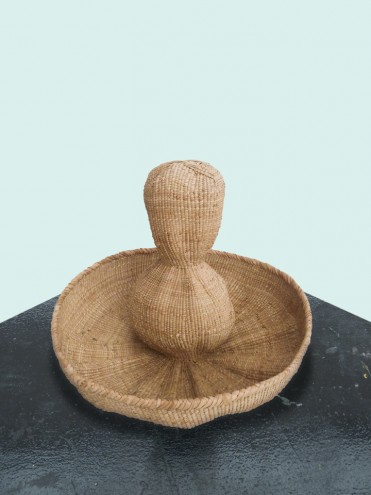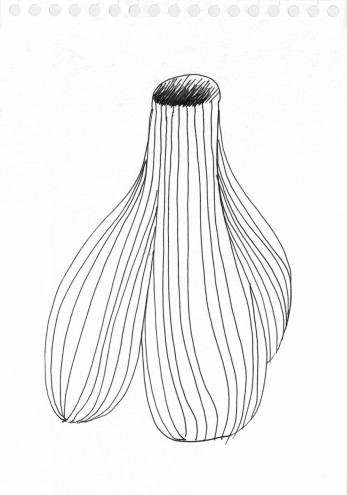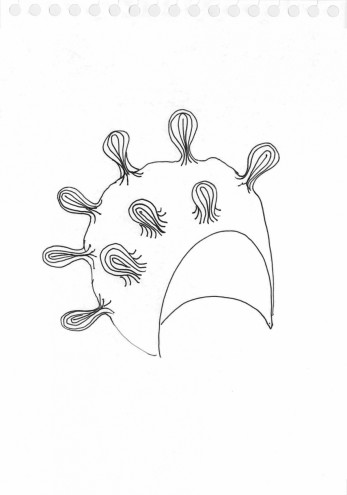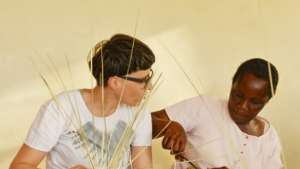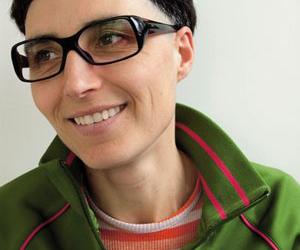From the Series
Curator Christine Eyene invited me in autumn 2013 to work with the Bulawayo basket-making community of women in Zimbabwe within the framework of the Bulawayo Home Industries, which promotes and safeguards the know-how of basket-making.
I had a similar experience in Hungary in 2009 when I was invited by Syrian artist Roza El Hassan to take part in a workshop with a Romani community in the village of Szendrőlád.
Working within high social impact contexts requires amplified awareness, forcing us to fully understand our reason for being present and how we are approaching the jointly created project.
I went to Bulawayo in spring 2014 and worked for one week with 17 women organised into five groups around a woman who was an expert in basket-making. It was a very humanly inspiring experience.
I wanted to focus the workshop on developing the emblematic gourd shape made by the community three years ago for the first Basket Case exhibition.
I love the gourd as it is inexact and conveys the feeling that one person gave their time and consideration – basically making one-of-a-kind objects each time.
This basket-making community has acquired the know-how to enlarge or reduce the shape at will. All I needed was to tell them to reduce the size, to make several simultaneously and to then combine them together, accentuating the natural aspect.
The women didn’t initially understand what I meant until the first gourd was made and then, from the look in their eyes I could guess they were pleased with the result.
The goal of the workshop was to give them some tips for a perceptible result, such as to never hook or sew on the parts together but rather to have them incorporated, woven on to the same body. Or each time to find a specific use for the shape, such as becoming the handle for a bag or a foot to raise a board.
It was a week full of constructive attempts that allowed for a language and a grammar to emerge from this same shape.
Some are more inspirational than others and some are more practical but they create a family that is limitless. A family that not only reinforces the community’s production identity but that also extends and brings it up to date. A family perpetuating the know-how by creating items that are deliberately more complicated in how the various bodies are woven together.
The project also involved different gourds made by different women to be appended to each other regardless of who actually made them, enabling an unprecedented collective production of objects.
The next step will be to see this family of gourds continue along these lines, with the backing of these women’s actions – that is what we most desire.
The Gourd’s Family collection is on show until 15 December as part of Basket Case II, a visual art, design and crafts exhibition at the National Gallery of Zimbabwe curated by Raphael Chikukwa, chief curator at the gallery, and Christine Eyene, Guild Research Fellow in Contemporary Art, University of Central Lancashire. Basket Case II features new commissions by artists Ifeoma Anyaeji (Nigeria), Alexandra Bircken (Germany), Tapfuma Gutsa (Zimbabwe), Delaine Le Bas (United Kingdom), Michel Paysant (France) as well as designers Matali Crasset (France) and Sebastian Herkner (Germany). The exhibition is presented by the EUNIC Zimbabwe Cluster (British Council, Alliance Française and Goethe Institute) and the National Gallery of Zimbabwe, Harare, and is the outcome of a series of artist residencies and design workshops held from April to July 2014 in various locations in Zimbabwe. The artists and designers collaborated with five weaving communities: Binga Craft Centre (Binga), Bulawayo Home Industries (Bulawayo), Lupane Women’s Centre (Lupane), Zienzele Foundation (Masvingo) and STEP Trust (Honde).

